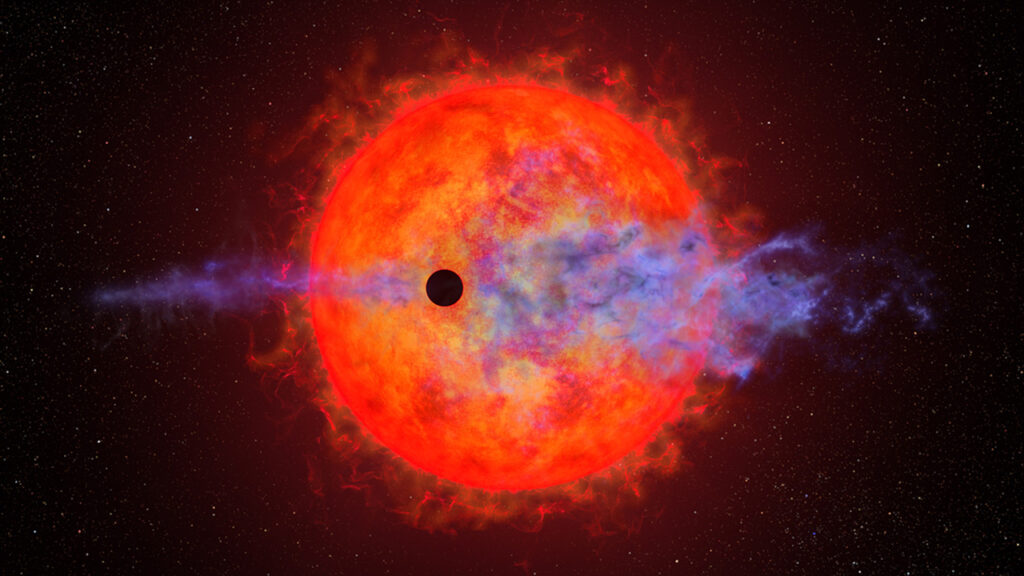American astronomers used the Hubble telescope to study an unusual exoplanet in the AU Microscopii system. From time to time, it emits part of its hydrogen atmosphere.

AU Microscopii is a young red dwarf located at a distance of 32 light-years from Earth. Its age exceeds 100 million years. To date, astronomers have managed to detect three exoplanets in this system, another one is still on the list of candidates.
The inner exoplanet of the AU Microscopii b has long been of interest to astronomers. It is an inflated gas world which orbit passes at a distance of 9.6 million km from its star. Its radius is four times, and its mass is ten times greater than the radius and mass of the Earth.
During observations of the AU Microscopii b, the researchers discovered something very strange: from time to time, the star loses its hydrogen atmosphere. Of course, today researchers are aware of a number of worlds, for which huge gas tails literally stretch. As a rule, these are exoplanets that orbit at a very short distance from the star and which powerful radiation gradually blows away their atmosphere.
AU Microscopii b differs from similar worlds in that it is not a constant process. The exoplanet alternates states of “rest”, when it practically does not lose its atmosphere, with powerful hydrogen emissions.
To solve the mystery of the AU Microscopii b, astronomers used Hubble. After observing the exoplanet, the telescope discovered something unusual. AU Microscopii not only forms gas plumes trailing behind it but also throws out hydrogen clouds in the direction of its orbital motion.
After analyzing all the available data, the researchers come to the conclusion that it’s all about the activity of its star. Despite the fact that red dwarfs are smaller and dimmer than our Sun, they differ in a very violent “temper”. Such stars can produce flares that are hundreds or even thousands of times more powerful than solar ones. At the same time, young red dwarfs show the greatest activity. According to the researchers, over time they can blow away most of the atmosphere of the gas giants located next to them, which is why they will eventually turn into rocky exoplanets.
This is a very important discovery. Red dwarfs make up the majority of stars in the Milky Way, and astronomers have long been trying to understand how favorable their systems are for the emergence of life.
According to https://www.nasa.gov
Follow us on Twitter to get the most interesting space news in time
https://twitter.com/ust_magazine

